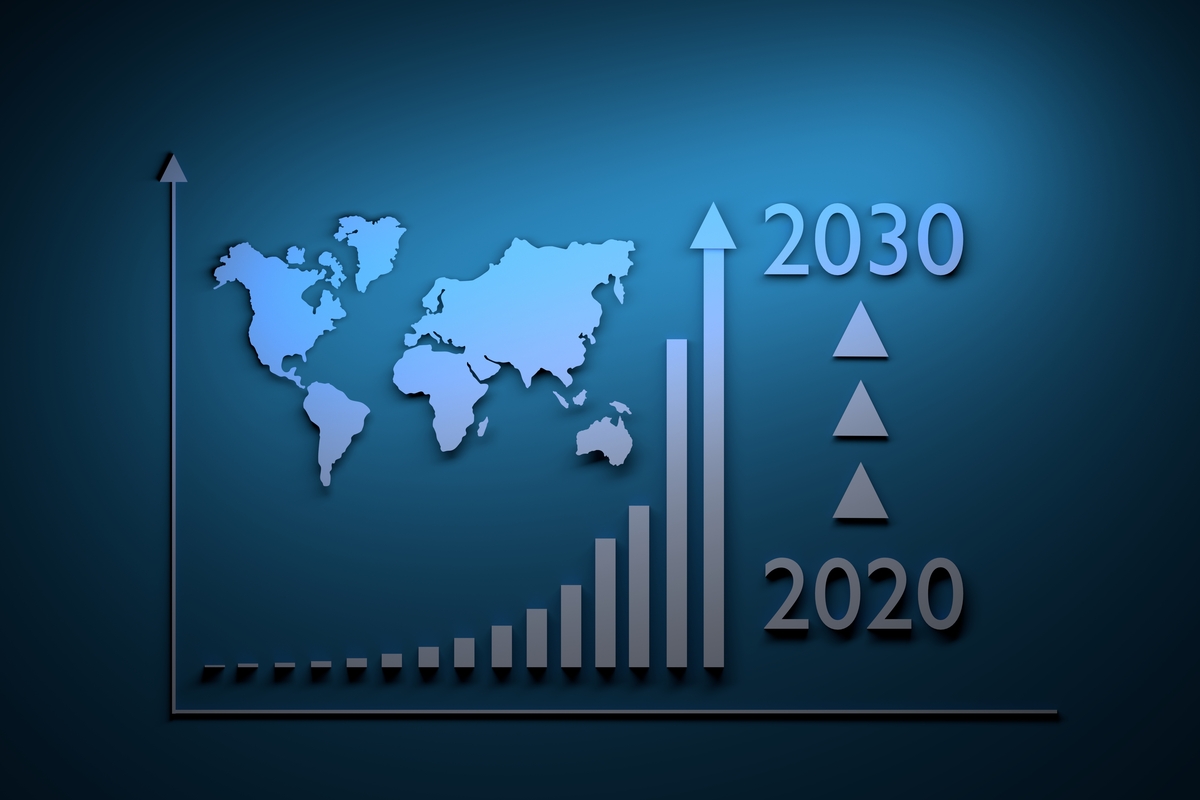
The Dow Jones Industrial Average, that venerable ledger of American industry, has long been a labyrinth of economic thought. Its 30 constituents, though fewer in number than the S&P 500 or Nasdaq Composite, form a microcosm of the nation’s financial consciousness. To those who study it, the Dow resembles a library where each volume-each company-carries a weight determined not by its content, but by the price of its spine.
Over centuries, the Dow has mirrored the U.S. economy’s shifting tides. Its industrial roots have given way to a dominion of finance and technology, a transformation akin to the evolution of a mythical beast. The index, though rigid in structure, has shown an unexpected flexibility, as if guided by an unseen hand orchestrating a grand, recursive dance.
Among its current denizens are four of the “Ten Titans”-Nvidia, Amazon, Microsoft, and Apple-entities whose market capitalizations collectively constitute 38% of the S&P 500. The remaining six-Alphabet, Meta, Broadcom, Tesla, Oracle, and Netflix-await their turn in this eternal game of musical chairs, their fates entangled in the Dow’s price-weighted alchemy.
To enter the Dow, a company must first navigate the labyrinth of stock splits, a ritual as old as the index itself. The median Dow stock trades at $227, with Goldman Sachs, the highest-priced, at $739. Those exceeding this threshold risk disrupting the balance, unless they undergo a metamorphosis-like Nvidia, which split its shares in 2024 to align with the index’s arcane geometry.
The Index’s Paradox
The Dow’s price-weighted structure, though imperfect, prevents a single entity from dominating the ledger. This mechanism, as enigmatic as the Library of Babel, ensures that no single volume sways the entire collection. Yet it also creates paradoxes: a company’s influence is tied not to its size, but to its price, a quirk that defies conventional logic.
For the Ten Titans, this means some must shed their shares like serpents shedding skin. Meta, for instance, would require a 3-for-1 split, while Netflix would need a 5-for-1. These acts of self-reduction are not mere financial maneuvers, but rites of passage in a sacred text known only to the Dow’s committee.
The Ten Titans’ Gambit
If the Dow’s architects were to welcome the remaining Titans, they might follow a script etched in the margins of forgotten treatises. Alphabet, the most deserving of all, could supplant Verizon Communications, the index’s least weighted entity. Its cloud infrastructure and YouTube empire would enrich the ledger, while its Gemini AI chatbot whispers secrets of the future.
Meta, though distant, might one day replace Honeywell International, a conglomerate poised to fracture into three entities by 2025. The Dow, ever pragmatic, may choose to discard Honeywell entirely, favoring the digital realm over manufacturing.
Netflix’s ascent, however, faces an insurmountable obstacle: Walt Disney. The latter’s parks, cruises, and theatrical ventures embody a broader economic tapestry, making its replacement a heretical act. Yet the stock’s meteoric rise over the past decade suggests even the most rigid labyrinths may yield.
Broadcom’s potential entry, replacing Cisco Systems, would reflect a shift toward diversification. Its acquisitions of VMware and AI accelerator chips echo the polyphonic nature of the index itself. Similarly, Oracle’s ascension over IBM would signal a triumph of cloud-centric innovation, though IBM’s legacy in quantum computing and AI remains a formidable barrier.
Tesla’s inclusion, though unconventional, could see it supplant Nike, a consumer discretionary relic. The absence of automakers in the Dow, save for the ghost of General Motors, underscores the index’s reluctance to embrace the future. Yet Tesla’s foray into robotics and renewable energy hints at a possible reconciliation with the past.
The Eternal Recurrence
The Dow’s evolution is not a linear progression, but a spiral of repetition and reinvention. Its underperformance relative to the S&P 500 and Nasdaq is not a flaw, but a testament to its adherence to an ancient schema. To alter it would be to disrupt the very essence of its existence.
By 2030, the Ten Titans may yet find their names inscribed in the index’s ledger. Whether through splits, replacements, or the silent passage of time, the Dow will continue its dance-a labyrinth where the past, present, and future coalesce into a single, infinite moment.
📚
Read More
- 39th Developer Notes: 2.5th Anniversary Update
- :Amazon’s ‘Gen V’ Takes A Swipe At Elon Musk: Kills The Goat
- Avantor’s Plunge and the $23M Gamble
- Umamusume: All current and upcoming characters
- 20 Anime Where the Protagonist’s Love Interest Is Canonically Non-Binary
- Stranger Things 5 Ending Explained: Was Vecna Defeated? All About Eleven’s Choice and Hawkins’ Future
- Overrated Crime Movies Everyone Seems To Like
- Solana’s Price Secret: Traders Are Going NUTS!
- ‘Zootopia 2’ Just Shattered the Most Important Box Office Record Ever
- Why the Russell 2000 ETF Might Just Be the Market’s Hidden Gem
2025-08-30 16:33